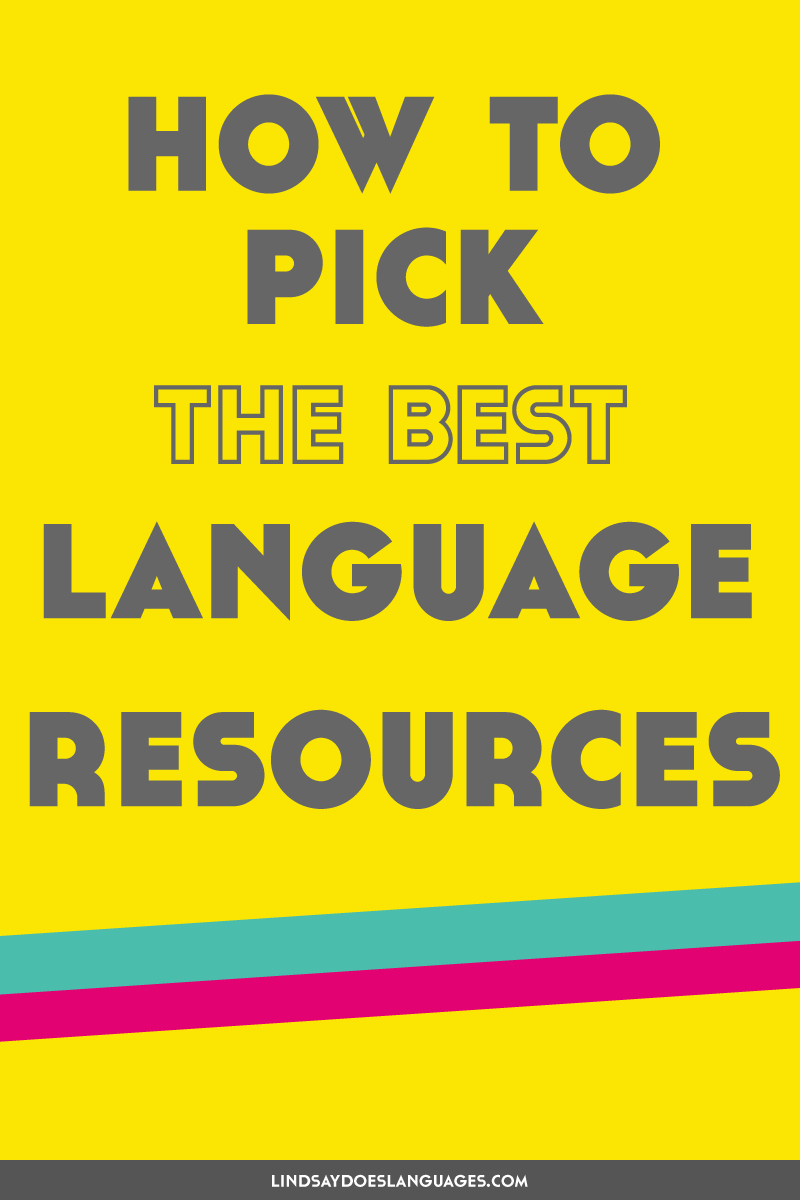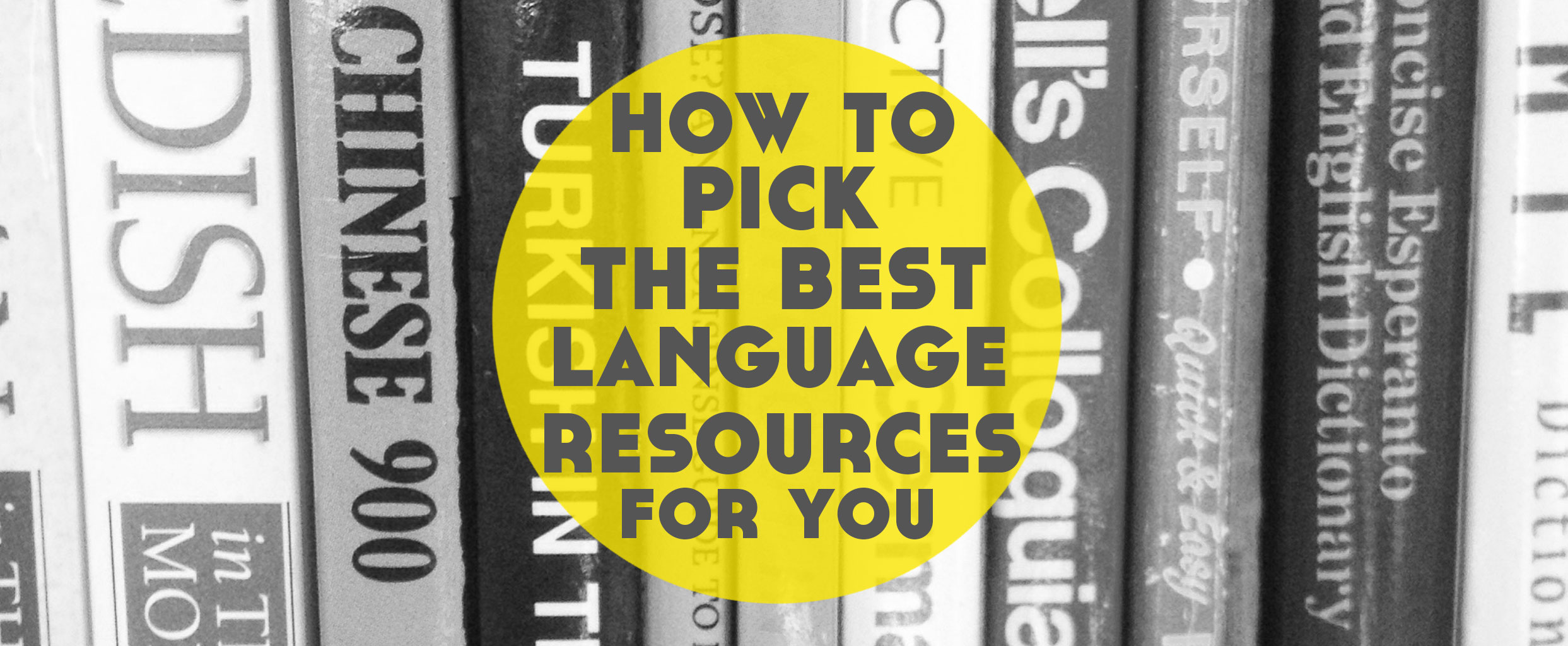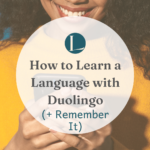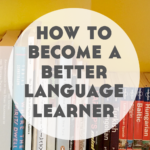May 7th, 2020
How to Pick The Best Language Learning Resources for You
If you’re learning a language like Spanish or French or English, something with lots of resources out there, it can become very overwhelming to pick resources, so keep track of what you try and if you liked it or not. Simply having a page at the start of your notebook can be a great help to track what you’ve used and help you know what’s worth keeping and what isn’t. Here’s some simple questions to help you figure out how to pick the best language learning resources for you.

How to Pick The Best Language Learning Resources for You
A really common struggle when learning a language with seemingly endless resources available is the feeling of overwhelm. Focus on a small number of resources and don’t worry about the fear of missing out, or FOMO, from what you’re not using. Focus on what’s in front of you, use what you do have rather than what you don’t.
I had the opposite experience when I started learning Guarani, a language spoken in Paraguay and surrounding parts of South America.
There were very few resources available online, and even less I could buy in shops or order online (read: basically zero!). Every resource I had became incredibly valuable to me, and it was up to me to really explore, extract, and practise what I could with what I had available.
That experience transferred to all my language learning, no matter what language.
Now, when learning any language, I see each resource as a sponge dripping wet with water. I can either squeeze a little water out of each (aka, learn just a little) or I can really wring one or two “sponges” out and get the most from them.
In other words, I can learn as much as possible from a smaller number of resources. This approach really helps if you struggle with overwhelm when it comes to resources.
Essential Questions to Ask Yourself When Picking Resources
First Language or Seventeenth?
One of the biggest things to consider when picking the right resources for you is your own experience of language learning.
The more experience you have, the less “beginner friendly” your resources need to be. But don’t worry, that doesn’t mean you’ll need to learn from academic papers and nothing else.
In fact, many books that are quite widely available aren’t what I would consider beginner friendly, and are much better suited to language learners with more experience under their belts.
The more experienced you are, the less intimidated you’ll be by that full on dialogue in chapter one. On top of that, if the resources available to you kinda suck, the more you’ll be able to adapt and twist things to better suit you. Think of yourself as the Bear Grylls of language learning!
(Sidenote: I Googled how to spell “Grylls” for this post and discovered that Bear Grylls actually has a degree in Spanish and German! You could literally drop him anywhere and he will survive…)
But hey, beginners! Don’t worry. There’s so much out there designed specifically with beginners in mind that you’re well covered too.
Below, I’ve listed some common resources and whether I think they’re best suited to people on their first or seventeenth language. You understand, seventeen is a random number, you can be on your second and totally pick from that column. There are no rules here.
READ MORE: Learning Multiple Languages Simultaneously
What Worked Before?
This isn’t just relevant if you’ve previously studied another language. If you have, great! Take into account what worked well for you and pick resources based on that knowledge.
However, if this is your first language, it’s still worth thinking back to other things you’ve learnt and considering how you learnt best.
Consider both the types of resources and the types of activities.
Resource wise, this means you’re considering things like:
video, audio, printed materials, websites, apps, formal, informal, slow, fast, funny, serious…
Activity wise, this includes:
listening and making notes at the same time, listening and making notes after, shadowing (speaking aloud after hearing), writing a sentence each day…so much could be included here!
If you’re stuck for inspiration, the best advice I can give you is to check 100 Creative Ideas for Solo Language Learners.
READ MORE: How to Use Disney+ for Language Learning
What do you want to do with this language?
Not all language goals are created equal. Sometimes it’s 100% full fluency you’re after, but other times you’re quite happy if you can order a drink on holiday. Neither is better than the other. All are valid.
However, what your goal is with the language will affect your approach to resources.
For example, you don’t want to be picking a full on complete course designed to take you up to B2 level if you just need a few words for a trip abroad.
That said, don’t assume that just because a resource calls itself “Holiday French in 10 Days” or “Spanish Fluency 100%!” that it’s the right one for you in that scenario either.
Remember to consider your answers to the other questions in this post as well.
READ MORE: How to Set Smart Goals for Language Learning
How much money can you dedicate to this?
This is a big question when it comes to picking resources.
If you can’t afford right now to spend big bucks on a language course then don’t. Throwing more money on the table isn’t going to get you to where you want to be, showing up is.
Time is more important than money when it comes to successful language learning. As long as you know what works for you and you’re spending that time wisely, you’ll be on a roll.
Sure, if you can and you want to, by all means go ahead and invest financially in your language learning.
But please don’t believe that you can’t learn a language because you can’t afford it. Language learning can be accessible to all. Time matters more, speaking of which…
READ MORE: How Long Does It Take and How Much Does It Cost to Learn a Language?
How much time can you dedicate to this?
Did you see that one coming?!
It doesn’t matter if you only have a small amount of time you can commit to language learning each day. Little by little, you can be taking steps forward to improve.
The key to understanding and feeling comfortable with your progress is acknowledging that the more time you can devote to language learning, the faster your progress is likely to be. (If you’re doing worthy stuff with that time, of course).
That also means that the less time you can dedicate, the slower your progress will be. But it’ll still be progress.
The time you can dedicate to language learning will also affect the resources you’ll pick.
For example, you don’t want to pick something with overly long tasks if you only have short pockets of time available throughout the day. You’ll instead be looking for apps and shorter tasks you can use as and when it suits you.
READ MORE: How to NOT Waste Time on Instagram When Learning a Language
How to Pick Language Learning Resources
Below you’ve got some images sharing some of my favourite key resources that I’ve used a lot with my own language learning over the years.
I’ve listed which ones are better suited for you based on answers to the above questions.












